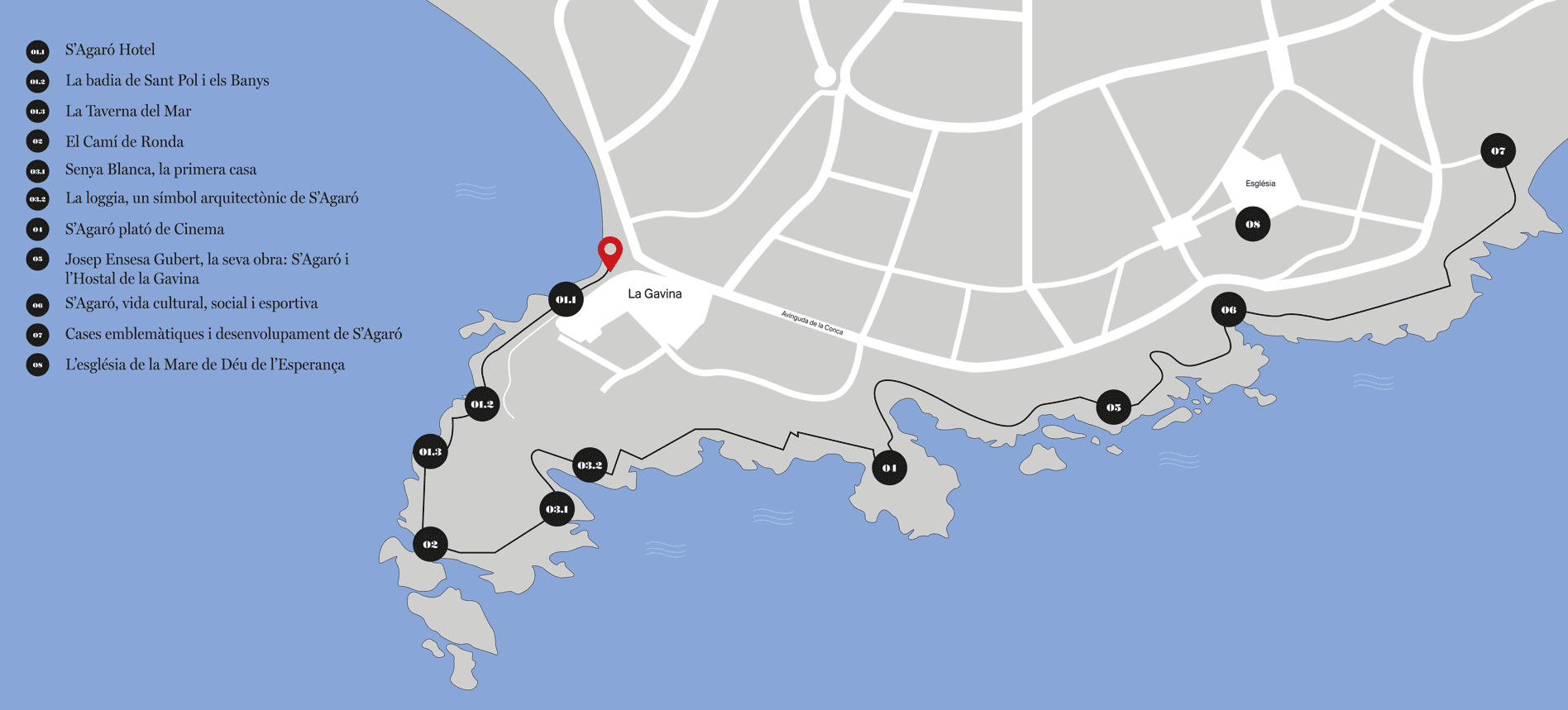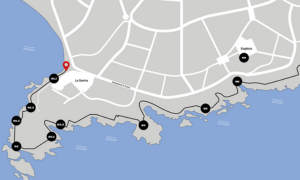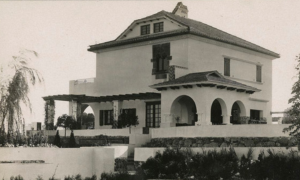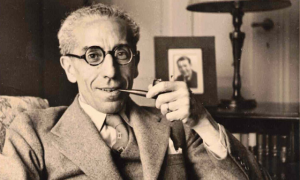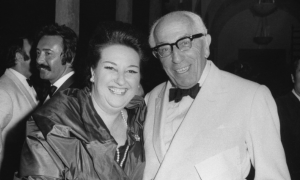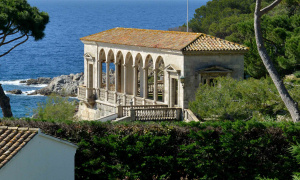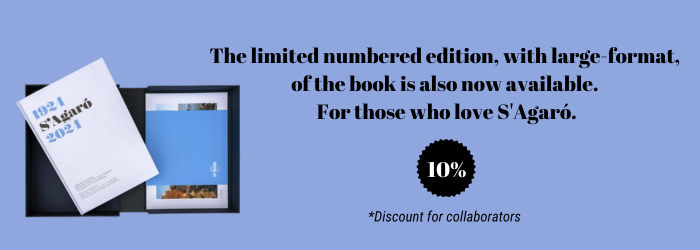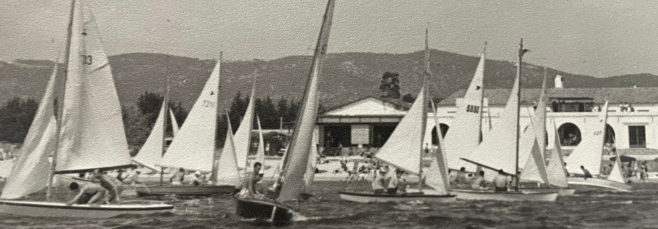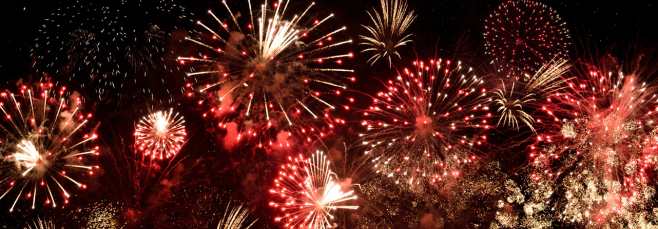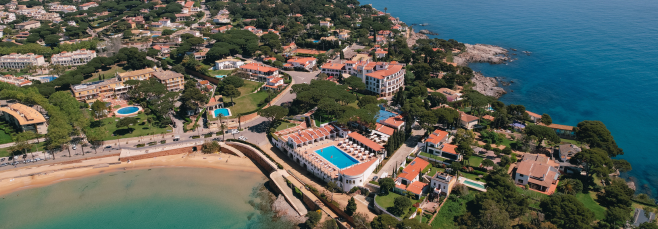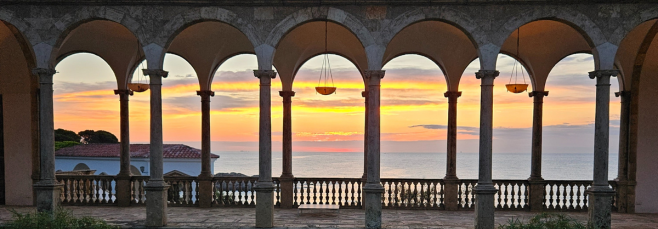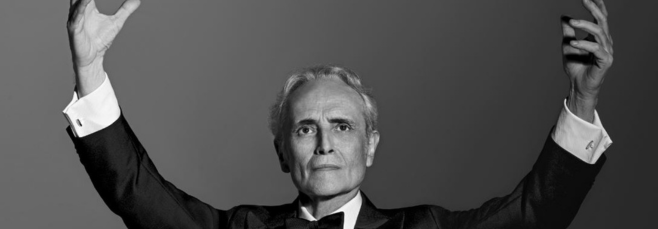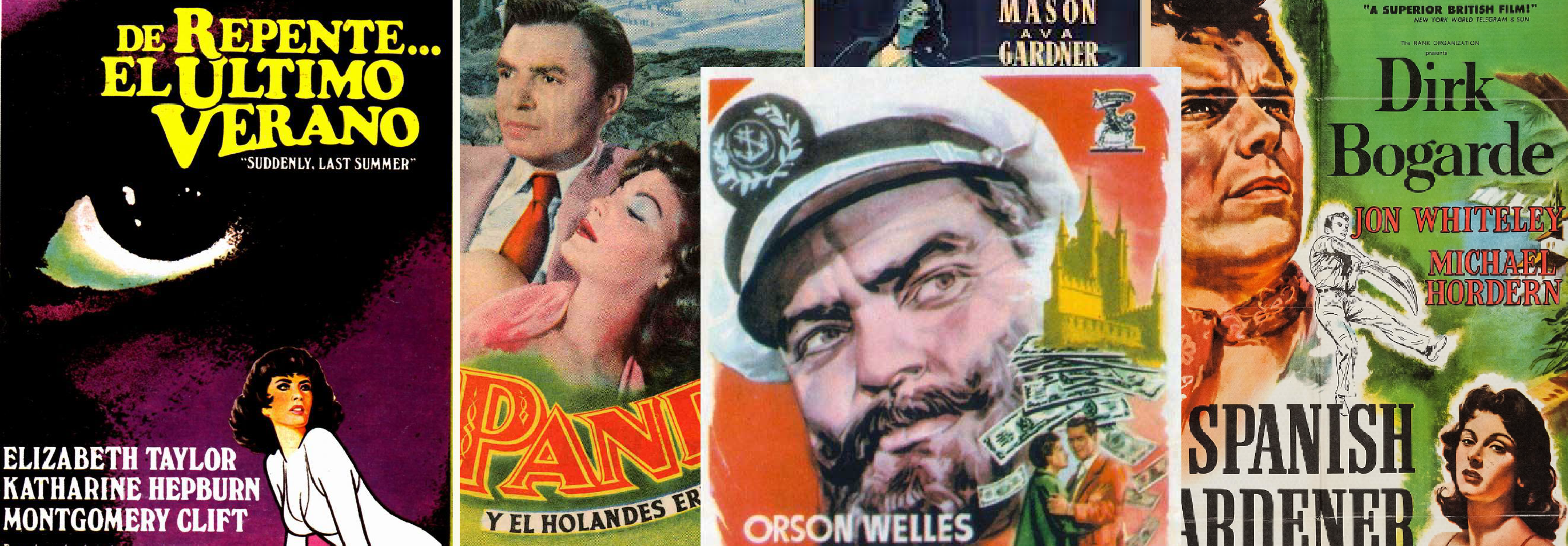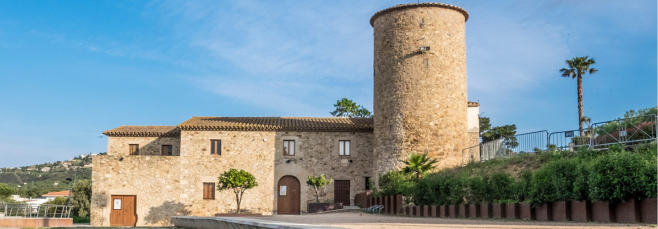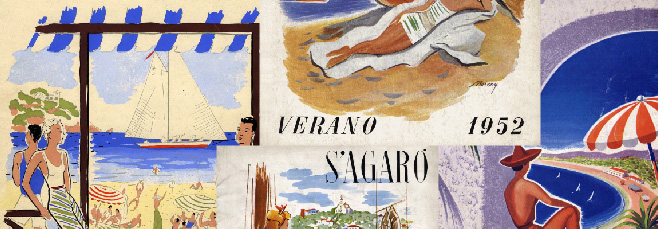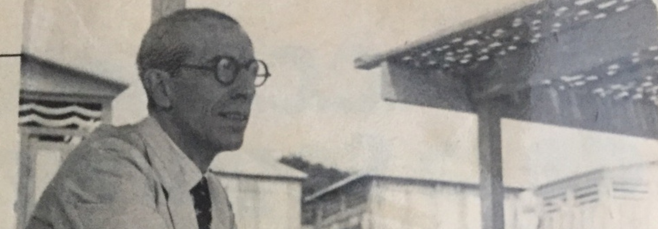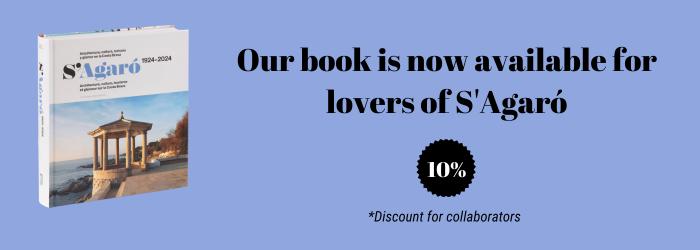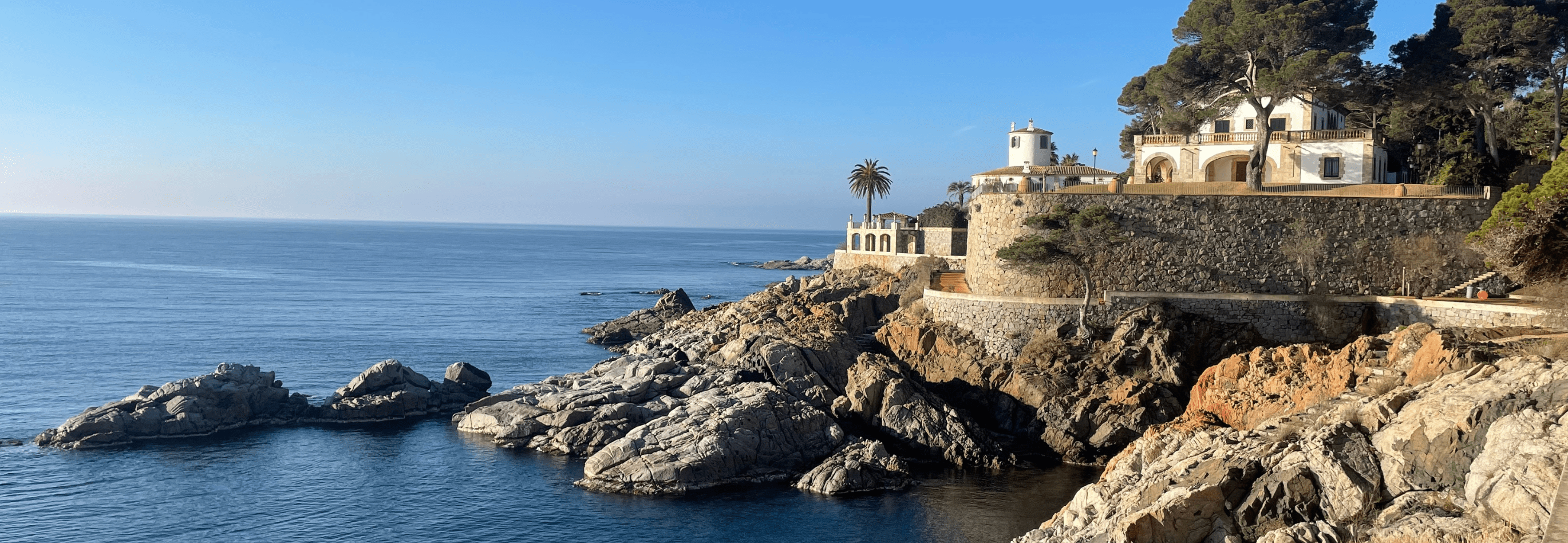
S’AGARÓ 1924 – 2024
“CAMÍ RONDA”
- S’AGARÓ
- Walkroute de Ronda
- May 25, 2024 – January 15, 2025
The objective of this itinerary is to connect all the aspects of this residential project through architecture, the geography of the environment, social and cultural life and its history, among others. One of the most emblematic points of interest is the monument commemorating of Josep Ensesa Gubert, located in the square of Mirador.
The option of group guided tours with prior reservation will also be available, organized by the Castell d’Aro-Platja d’Aro-S’Agaró City Council.
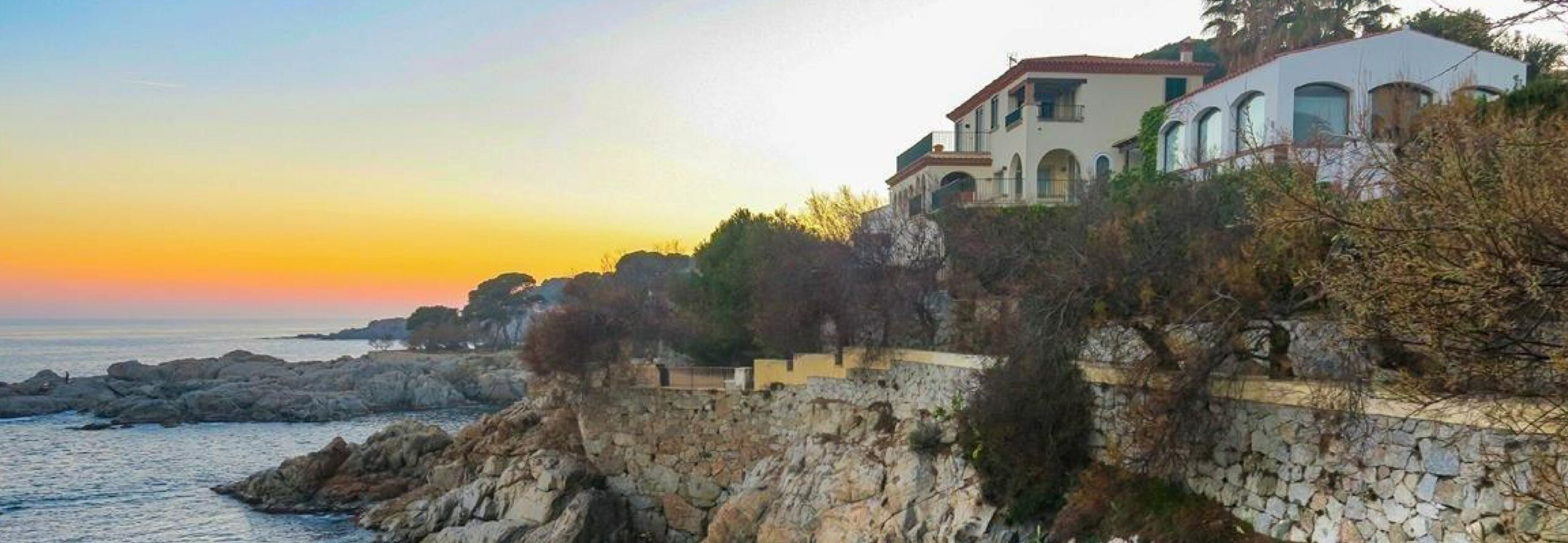
Exposition Camí de Ronda
00.1
Camí de Ronda Exhibition
01
The Bay of Sant Pol and the baths, the S'Agaró Hotel and the Taverna de Mar
The route outlines the coast and, through the Camí de Ronda, makes us discover outstanding locations that summarize these 100 years of history of S’Agaró. The Camino de Ronda exhibition brings together 8 exceptional locations with informative panels.
02
"Camí de Ronda"
Documented evolution of the construction of the road that has had to overcome an orography full of stones and cliffs. It is the most appropriate place to turn the tour into an open-air exhibition, which recalls the most relevant episodes in the history of S’Agaró.
03
“Senya Blanca,” the first house, and the loggia, an architectural symbol
04
Josep Ensesa Gubert, his work: S'Agaró and the Hostal de la Gavina
From the initial project of Ensesa and Masó, S’Agaró has evolved a lot but, as the preserved documentation shows, the initial spirit endures.
05
Josep Ensesa Gubert, his work: S'Agaró and the Hostal de la Gavina
06
S'Agaró, cultural, social and sporting life
Across these 100 years, S’Agaró has welcomed many famous people, both international and national, from all social and cultural backgrounds.
07
Emblematic houses and development of S'Agaró
Most of them are declared as assets of cultural interest. In most of the houses, you can see the influence of Catalan farmhouses with the use of elements from old farmhouses or their own architectural materials such as terracotta or ceramics.
08
The church of Mare de Déu de l’Esperança
The church was designed by Francesc Folguera and enshrined in 1942. Later, the interior was enriched with murals, which were the work of the landscape painter, Joan Colom.

